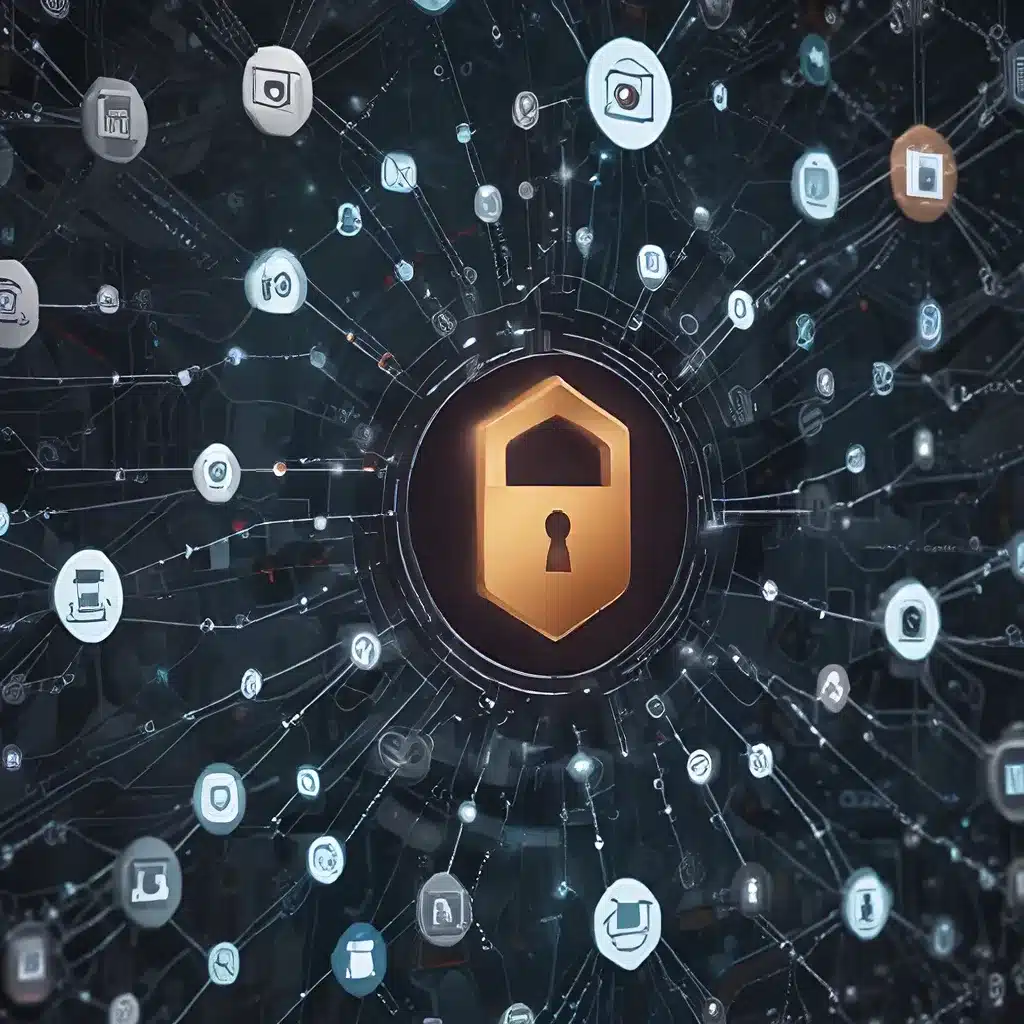
Safeguarding Sensor-Powered IoT Ecosystems
The rise of the Internet of Things (IoT) has revolutionized the way we interact with our environments, enabling seamless data collection and real-time insights through a vast network of interconnected sensor devices. As these sensor-powered IoT systems become increasingly pervasive, ensuring the security and privacy of the data they generate has become a critical concern.
Sensor networks, the foundational components of IoT, are responsible for gathering a wealth of information, from environmental conditions to personal health metrics. However, the distributed nature of these networks and the sheer volume of data they produce make them vulnerable to a range of cyber threats, including hacking, data breaches, and unauthorized access. Robust calibration strategies and security measures are essential to safeguarding the integrity and confidentiality of sensor data, ultimately protecting the entire IoT ecosystem.
Navigating the Complexities of Sensor Network Security
Sensor networks operate in diverse environments, from industrial facilities to smart homes, each with its unique security challenges. Designing a comprehensive security strategy for these networks requires a deep understanding of the underlying network topologies, communication protocols, and data management processes.
Sensor-networks.org explores the various security considerations that must be addressed when deploying sensor networks in IoT applications. These include:
- Access Control: Implementing robust authentication mechanisms to ensure only authorized entities can access and manipulate sensor data.
- Data Encryption: Employing encryption algorithms and key management protocols to safeguard the confidentiality of sensor data during transmission and storage.
- Tamper Detection: Developing tamper-resistant sensor designs and anomaly detection systems to identify and mitigate physical tampering or sensor manipulation.
- Network Resilience: Ensuring the availability and reliability of sensor networks through redundancy, load balancing, and fault-tolerant architectures.
- Firmware and Software Updates: Establishing secure firmware update procedures and software patch management to address vulnerabilities and maintain system integrity.
Addressing these security challenges requires a holistic approach that combines technical solutions, operational best practices, and organizational policies.
Calibration Strategies for Robust Sensor Data Security
Effective sensor calibration is a crucial aspect of ensuring the accuracy, reliability, and security of IoT sensor data. Calibration refers to the process of adjusting sensor parameters and configurations to ensure consistent and reliable measurements, often in response to environmental changes or sensor degradation over time.
Beyond the traditional calibration goals, security-focused calibration strategies have emerged as a means to enhance the resilience of sensor networks against cyber threats. These strategies involve:
- Secure Sensor Initialization: Implementing secure provisioning and enrollment procedures to ensure sensor devices are properly configured and authenticated before integration into the IoT network.
- Dynamic Sensor Recalibration: Regularly recalibrating sensor parameters to adapt to changing environmental conditions or detect potential sensor tampering or drift.
- Anomaly Detection and Correction: Deploying machine learning algorithms to identify anomalies in sensor data, triggering recalibration or maintenance actions to maintain data integrity.
- Sensor Fusion and Data Validation: Leveraging sensor fusion techniques to cross-validate data from multiple sensors, improving data accuracy and resilience against individual sensor failures or manipulation.
- Secure Firmware Updates: Implementing secure firmware and software update mechanisms to address vulnerabilities and security risks in sensor devices over their lifetime.
These calibration strategies, when combined with robust access controls, encryption, and network security measures, create a multifaceted approach to safeguarding sensor data in IoT applications.
Balancing Energy Efficiency and Security in Sensor Networks
One of the key challenges in sensor network design is balancing energy efficiency and security requirements. Sensor devices often have limited computational resources and battery life, which can constrain the implementation of advanced security measures.
To address this challenge, researchers and IoT experts have developed innovative techniques to optimize energy consumption while maintaining robust security protocols. These include:
- Lightweight Cryptography: Adopting low-power cryptographic algorithms and key management schemes tailored for resource-constrained sensor nodes.
- Energy-Efficient Authentication: Designing lightweight authentication protocols that minimize the computational and communication overhead for sensor devices.
- Adaptive Security Mechanisms: Implementing dynamic security policies that adjust the level of security based on the criticality of sensor data or the risk profile of the environment.
- Sensor Network Topology Optimization: Optimizing the network topology and data routing to minimize energy consumption while maintaining secure data transmission.
- Edge and Fog Computing: Leveraging edge computing and fog computing architectures to offload security-related computations from sensor nodes to more powerful edge devices or cloud resources.
By adopting these energy-efficient security strategies, IoT stakeholders can ensure that sensor networks not only provide robust cybersecurity and privacy protection but also operate in a sustainable and energy-efficient manner.
The Future of Sensor Network Security and IoT
As the IoT ecosystem continues to evolve, the security and privacy of sensor data will remain a critical concern. Emerging technologies, such as blockchain, quantum computing, and artificial intelligence, are poised to transform the landscape of sensor network security.
Blockchain-based decentralized sensor networks, for instance, offer tamper-resistant data storage and secure peer-to-peer transactions, addressing many of the centralized trust and single point of failure issues in traditional IoT architectures.
Quantum-resistant cryptography, on the other hand, promises to safeguard sensor data against the cryptanalytic capabilities of future quantum computers, ensuring the long-term data confidentiality and integrity.
Furthermore, the integration of machine learning and artificial intelligence into sensor network security can enable real-time anomaly detection, predictive maintenance, and automated response to cyber threats, enhancing the overall resilience of IoT ecosystems.
As the sensor network and IoT technologies continue to evolve, calibration strategies, security protocols, and energy-efficient designs will play a crucial role in protecting the vast amount of sensor data generated and ensuring the privacy and security of IoT applications.
Sensor-networks.org remains at the forefront of these advancements, providing thought leadership, industry insights, and technical expertise to help organizations navigate the complexities of securing their sensor-powered IoT environments.